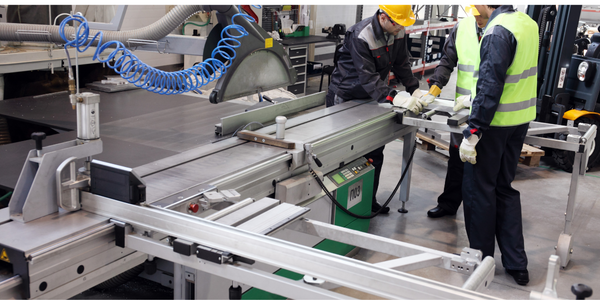技术
- 网络安全和隐私 - 端点安全
适用行业
- 半导体
客户
KINESYS 软件
关于客户
KINESYS Software 是半导体行业工厂自动化应用软件产品和服务的独立供应商。 KINESYS 是一家私营公司,专注于半导体制造“后端”过程的自动化
挑战
KINESYS Software 为集成设备制造商 (IDM) 和原始设备制造商 (OEM) 客户提供世界一流的软件产品和解决方案,以实现先进的晶圆和设备可追溯性和流程管理。 KINESYS 提供最先进的数据库技术,核心关注 SEMI 标准。 KINESYS 面临的挑战是使后端处理无故障且易于客户使用,同时支持更适应不断变化的行业需求的许可模式。
解决方案
KINESYS 将 Wibu-Systems 的 CodeMeter® 集成到其装配线生产主管 (ALPS) 旗舰产品中。 ALPS 最初是作为一种晶圆映射应用程序开发的,它具有适用于半导体工厂中使用的各种基板的映射(晶圆映射、条形映射、托盘映射等),以及通过半导体组装和封装中使用的多个工艺跟踪设备.将 KINESYS 的专业知识与 Wibu-Systems 的技术相结合,在加密狗上提供了一个简洁的解决方案,将安全性与许可证责任和灵活性以及最终用户的完全透明度相结合。
运营影响

Case Study missing?
Start adding your own!
Register with your work email and create a new case study profile for your business.
相关案例.

Case Study
Modular AI Defect Inspection Solution for Efficient Semiconductor Equipment Upgrades
Smasoft Technology Co., Ltd., a System Integrator that develops industrial automation software and offers AI application solutions, was commissioned by a semiconductor equipment manufacturer to implement AI inspection features into their Extreme Ultraviolet Light (EUV) pod inspection machines. The existing AOI software in the EUV pod inspection machines could only identify defective products but could not trace the cause of the defects. The manufacturer wanted to upgrade their machines with AI features to make the products more useful. The AI solution needed to complete the analysis of 380 images for a single pod within two minutes and inspect different materials simultaneously. This required multiple sets of AI models for interpretation. The solution also needed to be installed in a cabinet in the lower half of the machines, which posed a challenge due to the limited space. Smasoft needed to purchase a hardware solution with strong computing performance, stable operation, compact size, and flexible configuration to overcome these challenges.

Case Study
Optimizing Semiconductor Manufacturing Yield with IoT
A large U.S.-based manufacturer of high-performance semiconductors was facing a significant challenge in optimizing the manufacturing process of its wireless products. The company, which designs and delivers a broad set of cutting-edge products including radio frequency filters, amplifiers, modulators, attenuators, and more, was experiencing lower than expected overall yield in some of its most complex products. This was affecting the company's productivity and profitability, and there was a need for a solution that could predict low-yield wafers early in the process and identify process improvements to increase overall yield.
Case Study
Rapid Hybrid Services Deployment for Global Semiconductor Company
The U.S. manufacturer of engineered materials, optoelectronic components, and semiconductors was focused on growth through mergers and acquisitions (M&As). In 2019–2020, it acquired a global electronics firm and needed immediate connectivity and visibility into the acquired firm’s geo-distributed operations. The company had a highly compressed timeline, with only days to integrate the firm’s DDI operations, while deferring a full network migration to a future date. The company was actively engaged in acquiring and merging strategically aligned companies as a key global growth strategy. The company needed to rapidly integrate its new operations, which included significant remote locations in Asia. The company turned to Infoblox to quickly design a highly secure, available, and reliable solution that could deliver full visibility into new sites. It needed dynamic scalability to accommodate its growing operations and the ability to unify a disparate, geo-diverse infrastructure.

Case Study
Sony Italia's Server Consolidation: A Cost-Saving Success
Sony Italia, a branch of the global electronics giant Sony Corporation, was facing a significant challenge with its IT infrastructure. The company had consolidated most of its IT infrastructure into two data centers in the U.K, but Sony Italia opted to maintain its local server infrastructure for high performance and ease of maintenance. However, as data volumes and user numbers grew, the servers began to experience reduced performance and reliability. The company had 30 physical servers, but with limited budgets, replacing all of them was not feasible. Additionally, Sony Italia was concerned about the increasing heat output and electricity consumption in the data center. The company had already virtualized about half of its infrastructure, but needed a more cost-effective solution to extend these benefits.

Case Study
Managing the Bullwhip Effect in Semiconductor Supply Chain: A Case Study of Infineon Technologies AG
Infineon Technologies AG, a global top 10 semiconductor company, faced significant challenges in managing the volatility in demand and the bullwhip effect in their supply chain, especially during the COVID-19 pandemic. The semiconductor industry is characterized by capital intensity and high demand volatility, which is highly dependent on innovation cycles. The bullwhip effect, a phenomenon where order fluctuations are amplified as they move up the supply chain, was a major concern for Infineon. During the pandemic, the demand for automotive semiconductors dropped significantly due to reduced commuting, leading to excess inventory. However, when the market rebounded, the increased demand coincided with a global computer microchip shortage, exacerbating the bullwhip effect.








